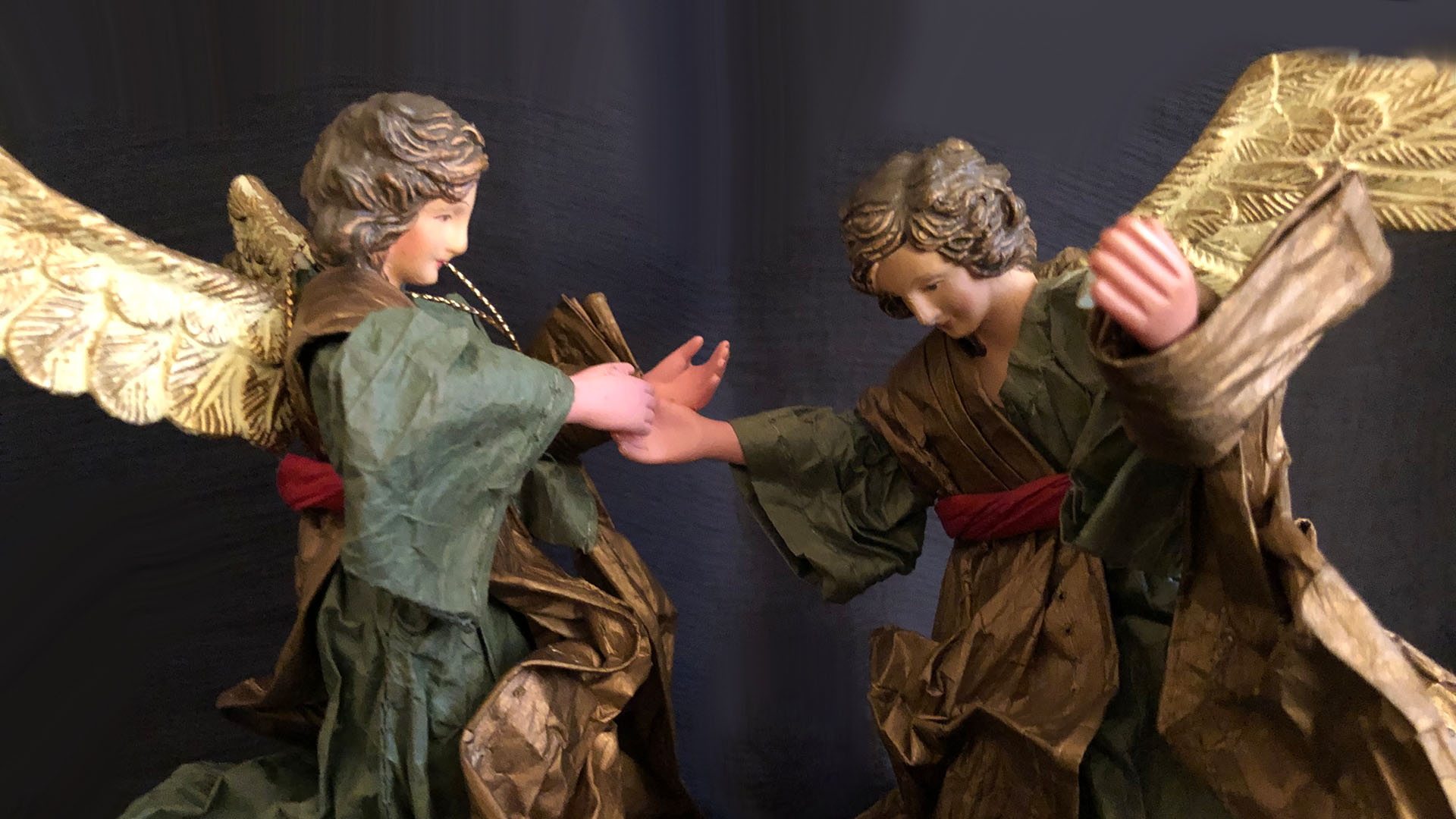
The Momentum of Gesture in Art und Religion (8)
Churches and faith communities have a very sensitive relationship to dance in their history. It is as if not only the possibility of sensual seduction is dangerous, but above all what dancing does to the spirit when it touches its drive base.
Dancing as movement and gesticulation as its momentum enable aesthetic and communicative experiences. These can liquefy and dissolve gestures of faith. Can this concern be felt in ecclesiastical condemnations of dance?
The rejection of dance as a performative art practice, however, is less common in contemporary religious practice than in times when physical movement was accepted only in prayer: in gestural cross-crossing, rocking hand-waving, kneeling. On the contrary, dance as part of the liturgy seems welcome today. Even artistic dancers are invited as guests in churches and are seen as an enrichment of religious life, not as a threat. The question arises, then, why “profane” dancing is no longer seen as reprehensible, but – like other artistic practices – as honoring God and pleasing mankind, as the angels proclaim.
Can it be that, in fact, liturgy can become so close to a practice of art that art practitioners and believers play by the same rules? The Catholic priest Romano Guardini writes in his treatise On the Spirit of Liturgy (1918) that to practice liturgy is to become a living work of art before God. Liturgy, according to Guardini, is itself purpose-free play, which – like a work of art – has the sole purpose of being there. In it, believers would decide to play before God, as David did when he danced before the Ark of the Covenant. (Guardini, Romano, On the Spirit of the Liturgy, 1997, 66-67)
However, such approaches to dance and to that momentum of gesture in art that is not merely liturgical sign seem to be expressions of wishful thinking. Could the Church, in accordance with Church teaching, actually open itself to an art that would not be at the service of the faith and the Church? “O man, learn to dance, or the angels in heaven will know nothing to do with you.” This sentence is readily attributed to Augustine – by believers who would like to see dancing established as part of the liturgy in the Catholic Church as well. However, this sentence is not found in Augustine. If one looks more closely at the attitude of the church scholar and bishop, one will have to conclude that he, too, held the view that dancing was to be kept out of the cult and out of everything that belonged to the cult, and, where still present, was to be eliminated. So it is not that simple to derive a Catholic-approved encounter of believers with dance from the tradition of this church itself.
Gestures emerge from movement. Movement is where it jumps back and forth. Where it goes under and over, up and down. Where it sways, swings, seesaws. Where it dances. Where it flows rhythmically, pulsates, contracts and stretches. So it moves. And then it moves as something. Movements and gestures of praying people, however, usually do not arise from a spontaneous flow of movement. Their movements are linked to instructions, to imperatives to imitate certain forms of gestures. The question is whether in all religions the easy and free development of dance-like gestures does not ultimately have to be brought to its knees in order to painfully experience the necessity of faith – as in that pilgrimage in which the faithful slide on bare knees over a stone staircase to an altar.
In liturgy, proclaimers of faith turn artistic gesticulatory activity (gestae agere lege arte) into meaningful gestures of faith (gestae facere lege religio). The consequence is that gestures are no longer perceived and experienced as a momentum („gift, Geschenk“), as the gift (donum, Geschenk) of a lingering moment, as the duration of a pausing movement. Gestures are conceived as divine factum (made, Gemachtes) – as if they were epiphanies fallen from heaven into the world, apparitions in which the Word of God is revealed in an allegorical way. And they are practiced in the liturgy as sacred datum (given, Gegebenes), for the authentication of the symbolic execution of the meaning they signify.
Therefore, the liturgical gesture “for eternity” is able to indicate in whose name the believer speaks. It claims eternal validity. This makes it irrelevant that the contents of faith are understood and change in time and history. The liturgical gesture is that which designates faith timelessly and produces in the consciousness of the faithful precisely those meanings which, according to Church doctrine, are contemporary at the time of the prayer. Is there a reason for the warning, which runs through the history of religion, against dancing as an improper, unseemly practice? Is there indeed a danger, when in the medium of the gestural the presence of the spirit can be felt, seen, heard, tasted, smelled, of losing faith in faith – and of losing oneself in the dissolution of formal gestures, for instance in dance, and then finding oneself anew – elsewhere? What would be the consequences if liturgically personified faith were to be transformed into a personal artistic playground?
Robert Krokowski